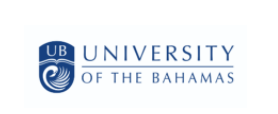
As the debate rages about when and how to end the curfews and lockdowns that have been implemented, the Deputy Chief Medical Officer Dr. Delon Brennen has asserted that these stringent and unprecedented measures taken to curb COVID-19 infections are necessary. Dr. Brennen shared during a virtual research presentation facilitated by University of The Bahamas (UB) that things could have been much worse for The Bahamas had those measures not been taken.
“Our situation could have been a lot bleaker than it currently is,” said Dr. Brennen at UB’s Research Edge forum. “From the time we started, our numbers would have been much higher than they are right now without those activities and those policies being put in place, first from a governmental level, and also from citizens really seeing that our reflection of where we are, our cases and our ability to handle it is really dependent upon what we do as a country and what we do as a nation.”
The country is in a state of emergency with physical distancing and proper respiratory hygiene being touted as the primary actions necessary to fight COVID-19, the disease caused by the novel coronavirus. Businesses which fall outside of the scope of the Emergency Orders remain shuttered, air and sea transit has been virtually shut down and educational institutions have transitioned to remote education.

Many have opined that more testing and isolation of persons should be done nationally in conjunction with the alternating lockdown and curfew periods. Doing that would likely require the utilization of rapid serological testing, which has since emerged as a possible solution to the mass testing issue, Dr. Brennen said. However, he cautioned that although rapid serological tests may produce faster results at cheaper prices, they are often unreliable. That is in direct contrast to the ‘gold standard’ for COVID-19 testing, the Real-time Polymerase Chain Reaction (PCR) test the government is presently using.
“There are a ton of companies that are out there telling people that ‘I have this rapid test, you can test 10,000; 15,000; 100,000 people’,” said Dr. Brennen. “But the sensitivities and the specificities are not necessarily something that you would hang your hat on to say ‘I would be willing to rely on this to be able to tell someone they’re healthy and set them out on the population’.”
On The Bahamas’ mortality rate, Dr. Brennen explained that an alternative could be to test many more persons in order to theoretically increase the number of confirmed cases, which would then be divided by the number of COVID-19 patients who have died to produce a lower mortality rate.
However, a potential challenge could arise when some people – presenting as mildly symptomatic or asymptomatic – are told by medical experts that they need not be hospitalized, but only confined to their respective homes and placed under self-quarantine. That instruction, he said, is essentially the same as the message the government is sending via the lockdowns—stay at home—thus making the mass testing exercise a “waste of time and resources”.
“So I think we just need to absorb that, we need to think about it; we need to ruminate on it a little bit because the end result is we cannot believe that testing is a panacea,” he said. “It just is not because no matter how many people you test, and no matter how low you decide you’re going to drive your case fatality rate, or your mortality rate, the simple fact is as long as you’re picking up the people who need to be picked up, those who have symptoms that are either moderate or severe, and you’re putting them in a place that they need to be, then you’re accomplishing what you need to do out of testing.”
Another protective measure in the COVID-19 fight is the wearing of masks, something which has been nationally mandated. Dr. Brennen pointed out that masks protect others in the community from being exposed to the wearer’s respiratory secretions, minimizing the amount of respiratory droplets that are spread in public.
“So while there is science behind mass use of masks is scant at best, the thought process is, it can’t hurt and theoretically is likely to at least give some protection,” noted Dr. Brennen. “And so if we can empower our population to do something and feel as though they’re protecting either themselves or somebody else, let’s do so.”
Adding that a vaccine for COVID-19 is likely a year away from being produced, he said the situation is far from hopeless as the government, due largely to the advice of the medical community, has been able to stem the tide the country might have otherwise experienced. “In order for us to be able to do that, this whole thought process around the flattening of the curve and making sure that we’re not accumulating cases faster than our health system is able to address them, is really the linchpin that is making sure that we can then move to opening up parts of our economy,” he said. “And so as long we’re accumulating cases at a rate that will still be able to be manageable by our health system, then we should be able to do so.”





